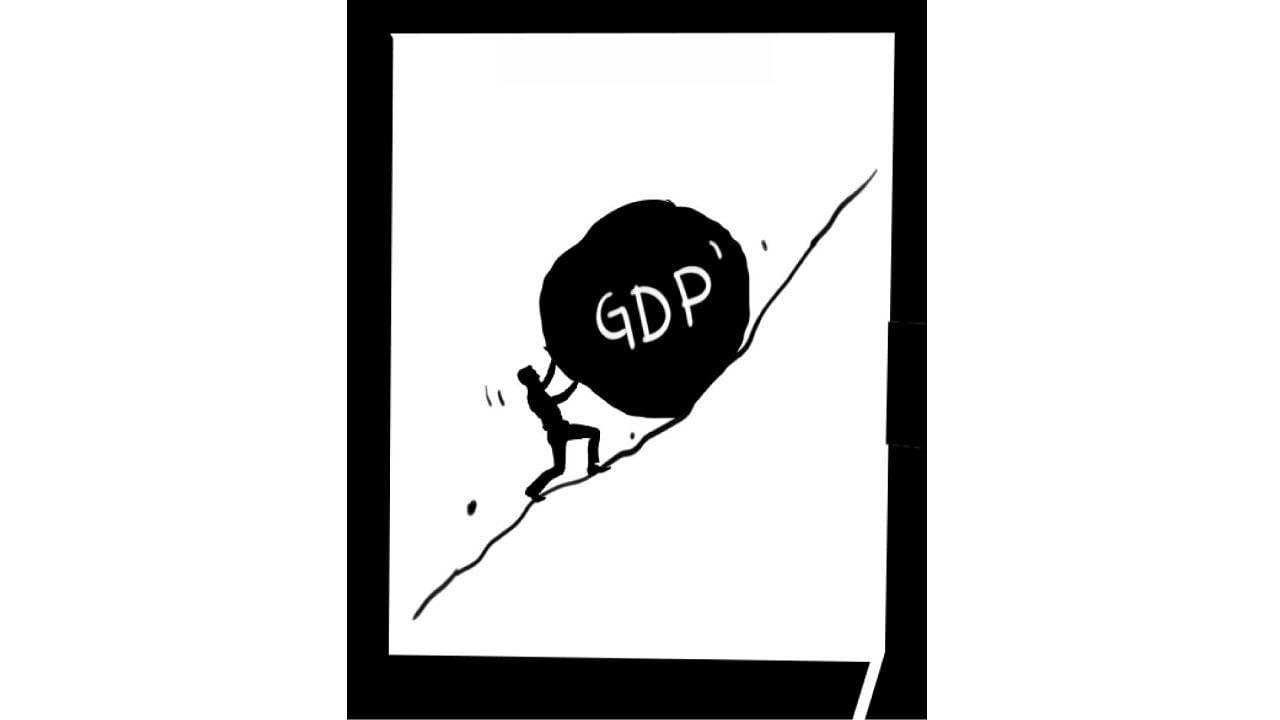
A better-than-expected fourth quarter growth in 2022-23 at 6.1% has pushed the growth rate for the year to 7.2%. For most economic analysts, this came as a surprise and is much higher than the assessment of the Monetary Policy Committee (MPC) of the RBI (6.8%). In a scenario of global slowdown, this is certainly creditable. This also confirms the fact that India is indeed the fastest-growing large economy currently. While this gives reason for optimism, there is no reason to preen over it, for in terms of per capita income, at about $2,000, India is still ranked at 142 among 192 countries, and there is a lot of catching up to do. Nevertheless, 7.2% growth in FY23 is creditable as it exceeded the expectations of the market.
Interestingly, after the high first quarter growth of 13.2% in 2022-23, mainly due to the base effect, it decelerated to 6.3% and 4.4% in the second and third quarters but picked up to 6.1% in the fourth quarter, and this marks a strong rebound and holds the promise of continued buoyancy in the economy in the coming quarters. The agricultural sector has shown strong growth of 5.5% in the fourth quarter, to take the growth of the sector for the whole year to 4%. This is likely to perk up rural demand. The high growth witnessed in labour-intensive sectors like construction (10.4%) and trade, hotels, transport and communication (9.1%) shows that the contact-intensive sectors have fully recovered. Furthermore, as these are labour-intensive, this marks a more equitable growth in the quarter.
While the services sector has registered robust growth, the growth in manufacturing has moved into positive territory after two quarters of contraction, registering a growth of 4.5%. The service sector growth has continued to be strong, and the trend is likely to continue into the future. The PMIs in both manufacturing and services in the last two months have shown creditable expansion. Bank lending to non-food sectors also has shown increases. Considering these factors, it should be possible to achieve the 6.5% growth estimated by the RBI in the current fiscal, barring unforeseen circumstances. Of course, there are downside risks emanating from poor monsoons and global economic slowdown. High interest rates could also be a deterrent to new investments, but with inflation coming down, the monetary policy committee is likely to pause in the near term, and if the prices continue a downward trend, it may also lower the rates in the August meeting.
As far as the expenditure components of GDP are concerned, the share of gross fixed capital formation (GFCF) has shown a significant increase. In constant prices, it has increased to 34% in 2022-23 from 32.7% in the previous year. This seems to be mainly due to sharp increases in public sector capital formation and its ‘crowding in’ effects on private sector investment. As a ratio of GDP, in constant (2011) prices, the GFCF shows an increase of 11.4%. The increase in investment spending was particularly sharp in the last quarter as its share in GDP increased from 31.7% to 35.3%, registering a growth of 20.8%.
Also Read | 7.2% GDP growth! Let’s not over-celebrate
In other words, there seems to have been a concerted effort at increasing capital expenditures by the public sector in the last quarter and this seems to have had multiplier effects on private investment as well, and this bodes well for medium-term growth prospects.
Despite a reasonably better performance, concerns about the performance of the manufacturing sector remain. As mentioned above, in the second and third quarters, the manufacturing sector witnessed negative growth, and 4.5% in the fourth quarter. In fact, for the whole year, the growth was just 1.3%, which is much lower than the 4% witnessed in agriculture and, ironically, the share of manufacturing relative to agriculture in GDP showed a decline.
The absorption of a large army of the unemployed and underemployed workforce with low productivity from agriculture depends crucially on the expansion of the manufacturing sector. Increasing the long-term growth prospects of the country, therefore, requires targeted interventions to enhance growth in the manufacturing sector by both the Union and state governments on matters such as land acquisition, labour laws, giving expeditious clearances, and legal reforms to ensure enforcement of contracts without much delay.
The most important reform needed now is the reversal of the protectionist trend since 2017. There has been a steady increase in the tariff rates since 2017. According to Arvind Panagariya (India’s Trade Policy: The Past, Present and Future, Commencement Day Annual Lecture, Exim Bank, 2021), the simple average tariff rate has increased from 8.9% in 2010-11 to 11.1% in 2020-21, and the tariff rates above 15% increased to 25.4% during the same period. This, in fact, is an acknowledgement of the lack of competitiveness in Indian manufacturing.
The focus on ‘Atmanirbhar Bharat’ and ‘Make in India’ could easily slip into an import-substituting strategy which we adopted for 40 years, making the manufacturing sector non-competitive. Having tried and tested it, we abandoned that course. To go back to it will ruin the manufacturing sector. Erecting a high tariff wall not only adversely impacts competitiveness but also dampens exports as when the exporters import goods, the cost goes up due to import duty.
The government has started production-linked incentives (PLI) to undertake import substitution and export promotion, and this is like creating scaffolding instead of erecting a wall. Like other Asian countries and our competitors, we need to join various trade blocks and aggressively enter into bilateral agreements and regional groups to take advantage of the international manufacturers diversifying from China. To take advantage of the China-plus-one policy, we need to create conditions without much delay.
(The writer is a former Director, NIPFP, and Member, Fourteenth Finance Commission. He is presently, Chief Economic Adviser, Brickwork Ratings)